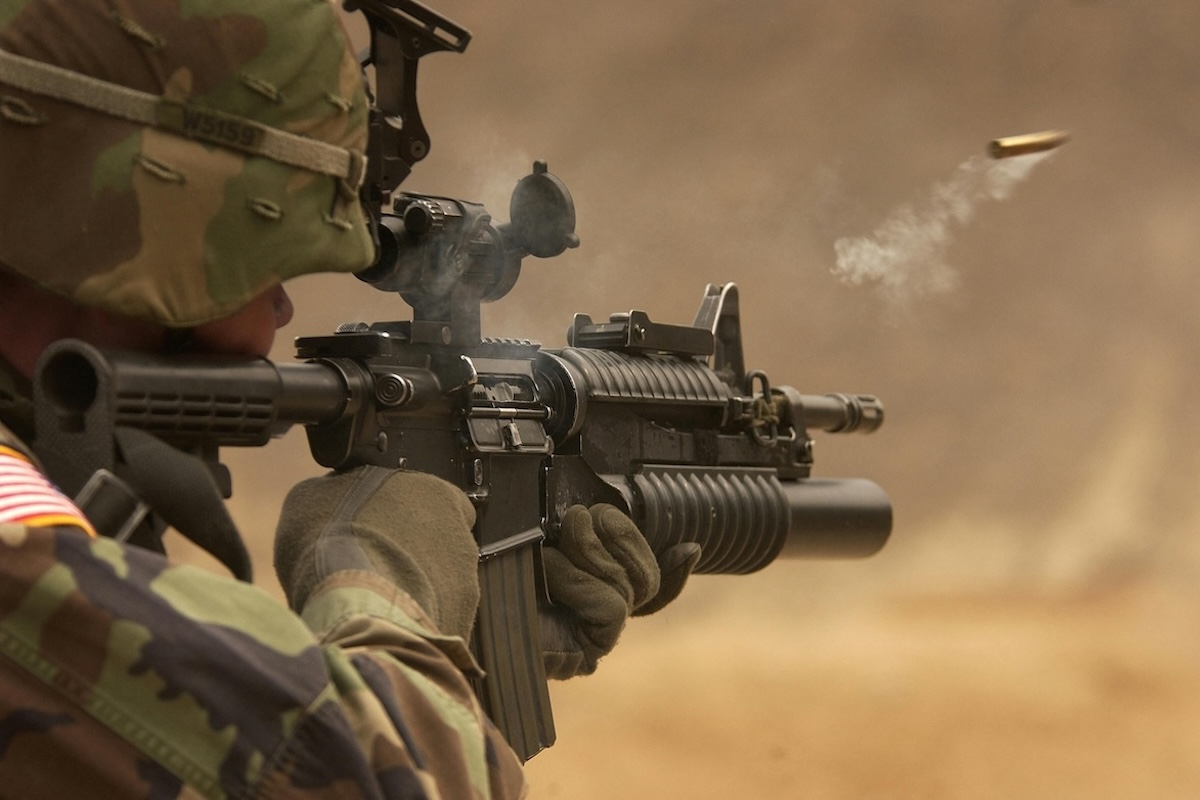Round 2 of Export Control Reform Now in Effect

Article Summary
Export Control Reform (ECR) is a U.S. government initiative to streamline and modernize export controls, focusing on transferring less sensitive items from the USML to the CCL.
Round 2 revised categories on the USML and moved certain items to the CCL under the '600 series,' simplifying licensing for less sensitive items.
Round 2 became effective on January 6, 2014, after a 180-day implementation period.
The 'specially designed' definition determines whether an item is controlled under the USML or CCL, providing clarity and reducing ambiguity in export classifications.
Items moved to the CCL benefit from streamlined licensing policies, including License Exception STA, which allows exports to certain allied countries without a license.
Exporters must review the revised control lists, reclassify items, and ensure compliance with new licensing requirements to avoid penalties and delays.
The next round of ECR amendments went into effect today, albeit with numerous clarifications and cleanups included. It was announced and succinctly explained today by Jim Bartlett in his terrific newsletter which we have excerpted below. We have also included an excellent summary on the same topic which was published in Bartlett’s newsletter on Dec. 27 by Bruce Leeds of Braumiller Schulz.
The long-awaited (6 months) ITAR and EAR amendments went into effect today following four amendments to the International Traffic in Arms Regulations (ITAR), 22 CFR 120-130, and the Export Administration Regulations (EAR), 15 CFR 730-774, were made by publication in 2 January Federal Regulations.
(1) The “ECR-II” EAR amendment that was published on July 8, 2013 (78 FR 40892), was further amended today by “clean-up” clarifications and corrections that changed a few words and made numerous punctuation changes. If you have been referring to the July 8 publication to plan for the January 6 EAR amendments, you must make the corrections listed today to have a correct version effective today.
(2) The “ECR-II” ITAR amendment that was published on July 8, 2013 (78 FR 40891), which takes effect today, was further amended today by “clean-up” clarifications and corrections that changed a few words and made numerous punctuation changes. If you have been referring to the July 8 publication to plan for the January 6 amendments, you must make the corrections listed on 2 January.
(3) A new “ECR-III” amendment, effective in 6 months — on July 1, 2014 — adds EAR controls on energetic materials, personal protective equipment, shelters, military training equipment, articles related to launch vehicles, missiles, rockets, military explosives, and items within the scope of the Munitions List of the Wassenaar Arrangement (WAML) that are not specifically identified on the USML, but were subject to ITAR jurisdiction. It also moves certain items from one ECCN to another.
(4) A new “ECR-III” amendment, effective July 1, 2014, revises five more USML categories and provide other changes:
(i) Revises USML Categories:
- Cat IV (Launch Vehicles, Guided Missiles, Ballistic Missiles, Rockets, Torpedoes, Bombs, and Mines)
- Cat V (Explosives and Energetic Materials, Propellants, Incendiary Agents, and Their Constituents)
- Cat IX (Military Training Equipment)
- Cat X (Personal Protective Equipment)
- Cat XVI (Nuclear Weapons Related Articles)
(ii) Adds a definition for the term “equipment”
(iii) Implements a new licensing procedure for exporting items subject to the EAR that are to be exported with defense articles.
(iv) Makes related changes to other ITAR sections.
The Annotated ITAR (“BITAR”) contains all the corrected updated regulations, and … yes, the day has arrived when it is no longer free … will be available for sale by subscription for a year’s worth of updated editions in a few days.
Note from CTP – As mentioned above, there was an excellent earlier article on this topic written on Dec. 27 by Bruce Leeds of Braumiller Schulz which we reprint here today.
“Export Control Reform – Get Ready for Round 2”
Source: http://www.braumillerschulz.com/export-control-reform-get-ready-round-2/
The first major implementation event of export control reform took place on Oct. 15, 2013, when the revised Cat. VIII and new Cat. XIX of the US Munitions List (USML) and the corresponding provisions in the 600 series of the Commerce Control List (CCL) went into effect.
The next implementation is on Jan. 6, 2014, when four revised categories of the USML and new provisions in the CCL become effective. The Final Rule for these changes was published on July 8, 2013, with a 180 day transition period. The affected USML categories and defense articles are:
- Cat. VI – Surface Vessels of War and Special Naval Equipment
- Cat. VII – Military Ground Vehicles
- Cat. XIII – Materials and Miscellaneous Articles
- Cat. XX – Submersible Vessels and Related Articles
The revisions utilized the same philosophy and guidelines as before. The controlled articles are specifically described, as opposed to the more general “catch-all” language used previously. This is what the Departments of State and Commerce describe as a “positive list.” The new provisions create a “bright line” between what is controlled under the International Traffic in Arms Regulations (ITAR) and what isn’t. One of the main goals is to remove many parts, components, accessories, and attachments from the USML and ITAR control. Under the new provisions, many specialized parts and components used in military vehicles and naval vessels will no longer be subject to ITAR controls. Instead they will be classified in the CCL and require a Department of Commerce license or license exception for export.
Many companies may look at the above categories and conclude that they are not affected by the Jan. 6 changes. However, the primary impact will be felt by companies that provide parts and subassemblies that go into military vessels, vehicles, submersibles in Cats. VI, VII and XIX, or the materials and articles in Cat. XIII. They will need to determine how the articles they manufacture are used, or the products into which they are integrated. They may find that the articles they produce are used in a naval vessel subsystem described in Cat. VI, or a camera or cryptographic equipment described in Cat. XIII. Those companies will need to classify their products under the revised regulations to determine how the products, or associated technical data, are now controlled. Classifying them the old way will not be acceptable, and could lead to license applications being returned without action.
Classification will be a more complex process. As an example, before Jan. 6, 2014, a part or subsystem specially designed for a naval vessel would go in Cat. VI. Now the exporter must carefully read the descriptions of controlled articles in Cat. VI to determine whether an article to be exported is controlled on the USML. Among other things, those descriptions in revised Cat. VI control:
“(2) Systems that manage, store, create, distribute, conserve, and transfer energy, and specially designed parts and components therefor, that have:
(i) Storage exceeding 30MJ;
(ii) A discharge rate less than 3 seconds; and
(iii) A cycle time under 45 seconds”
If you have a good technical background this may be simple; if not, get some assistance. A decision tree approach will work well with the revised USML and CCL. The decision tree for parts, components, accessories and attachments would look something like this:
1) Is the article (or technical data) used in a naval vessel, submersible, or military vehicle in Cats. VI, VII, or XX or a material or article described in USML Cat. XIII?
2) If yes, is it a part, component, accessory or attachment?
3) If yes, is it described in the revised USML Cats. VI, VIII, XIII or XX?
4) If yes, does it meet the specially designed definition?
5) If no, is it described anywhere else on the USML?
6) If no, is it described in any of the 600 series provisions of the CCL?
7) If no, is it described in any other provision of the CCL?
8) If no, it is classified under EAR99.
The end result of export control reform will be reduced controls; however determining whether a particular component or technical data qualifies for those reduced controls will be a challenge. Time to ask for that raise!
Key Points
What is Export Control Reform?
- Definition: Export Control Reform (ECR) is a U.S. government initiative aimed at modernizing and simplifying the export control system.
- Goals:
- Enhance national security by focusing controls on the most sensitive items.
- Facilitate trade by reducing unnecessary restrictions on less sensitive items.
- Key Focus: Transferring less sensitive items from the U.S. Munitions List (USML) to the Commerce Control List (CCL).
What changes were implemented in Round 2 of Export Control Reform?
- USML Revisions: Categories on the USML were revised to remove less sensitive items.
- CCL Additions: Items removed from the USML were added to the CCL under the '600 series,' which is specifically designed for military-related items.
- Streamlined Licensing: The changes simplify licensing for less sensitive items, making it easier for exporters to comply with regulations.
When did Round 2 of Export Control Reform take effect?
- Effective Date: Round 2 became effective on January 6, 2014, following a 180-day implementation period.
- Implementation Timeline: The reforms were announced in mid-2013, giving exporters time to prepare for the changes.
What is the 'specially designed' definition, and why is it important?
- Definition: The 'specially designed' definition is a two-part test used to determine whether an item is controlled under the USML or CCL.
- Catch and Release:
- Catch: Items that are specifically designed for military use are 'caught' under the definition.
- Release: Items that meet specific criteria, such as having a predominant commercial use, are 'released' from control.
- Impact: This definition reduces ambiguity and provides clarity for exporters when classifying items.
How does Round 2 impact licensing policies?
- Streamlined Licensing: Items moved to the CCL benefit from simplified licensing policies, including:
- License Exception STA: Allows exports to 36 allied countries without a license, provided certain conditions are met.
- Reduced Burden: Exporters of less sensitive items face fewer restrictions, enabling faster and more efficient trade.
- Compliance Requirements: Exporters must ensure proper classification and licensing to avoid penalties.
What are the implications of these changes for exporters?
- Reclassification: Exporters must review the revised control lists and reclassify their items under the new system.
- Compliance Challenges: The transition requires careful attention to licensing requirements and documentation.
- Opportunities: Streamlined licensing policies open up new markets and reduce delays for less sensitive items.
- Risks: Failure to comply with the new regulations can result in penalties, delays, and reputational damage.










